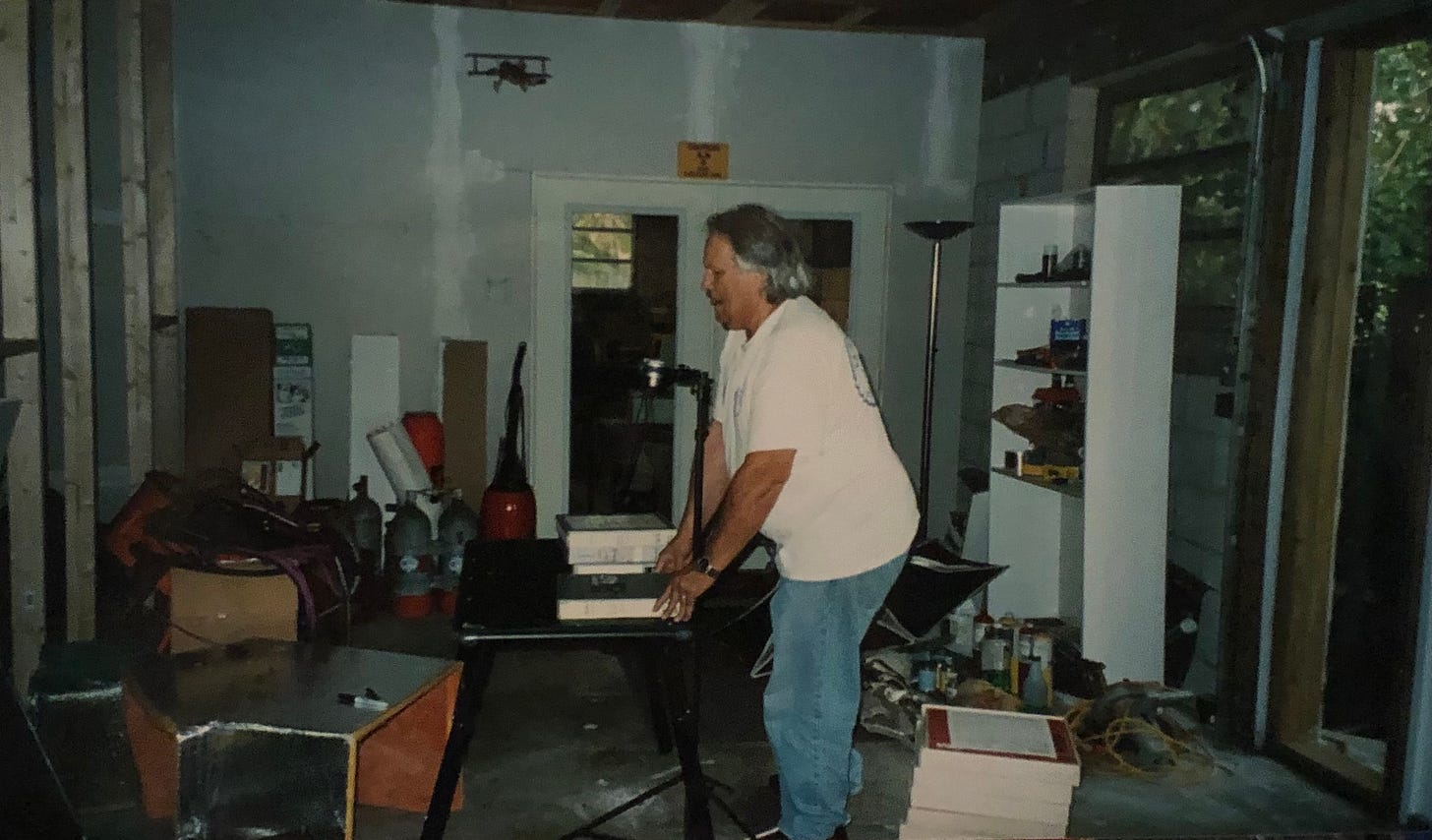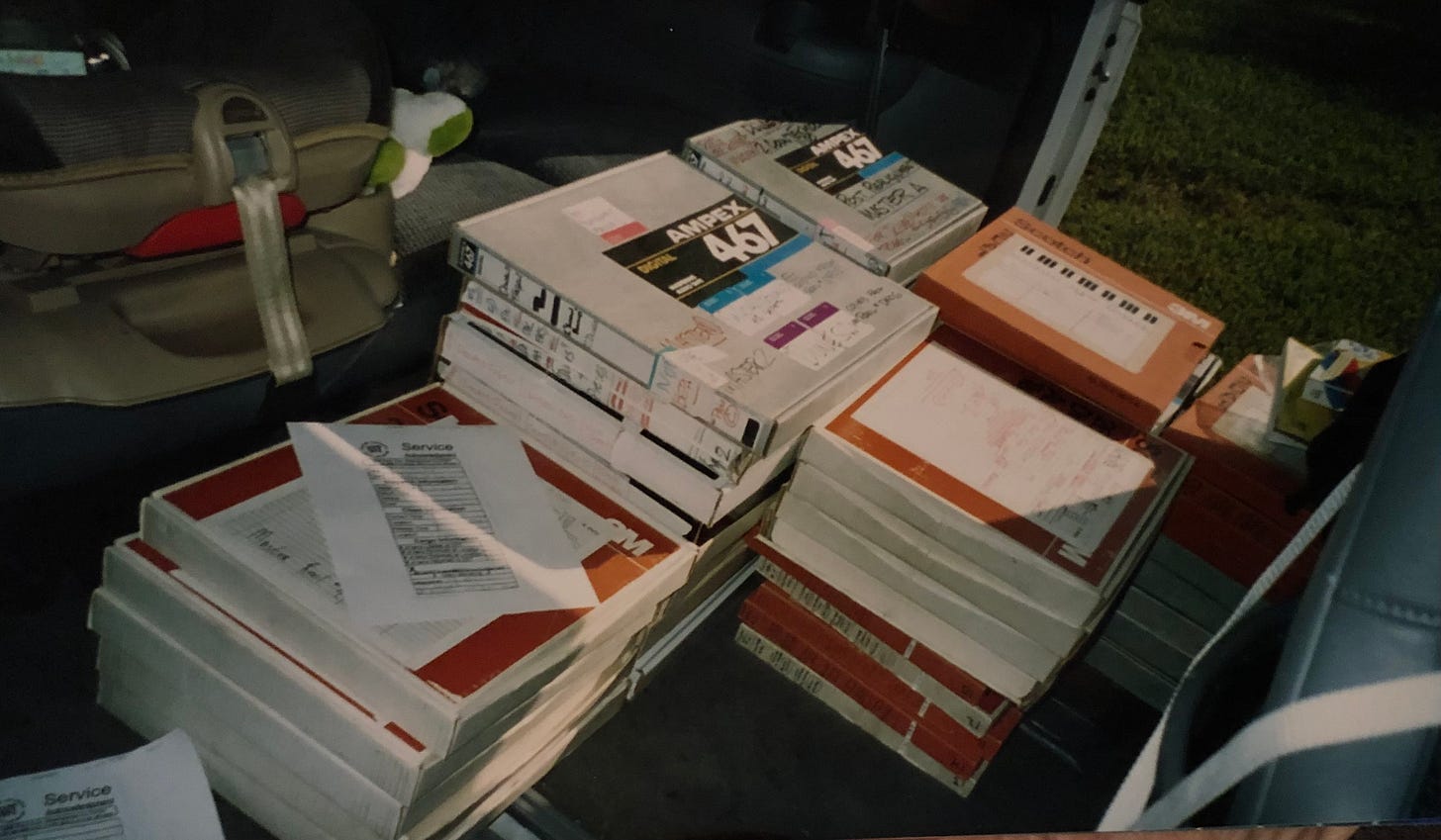In the days before a hapless studio technician erased Steely Dan’s “The Second Arrangement” in 1979, Roger Nichols, the band’s late, great longtime engineer, made a rough mix of the track on a cassette tape. The song was nearly complete. Horns and a fade would soon be added. Producer Gary Katz already was imagining it as the band’s next single. When Nichols returned to his apartment at 30 Lincoln Plaza in New York, he set the tape aside and forgot about it.
“Roger would bring home work tapes from the studio almost every night,” says Conrad Reeder, Nichols’s widow. (He died from pancreatic cancer at the age of 66 in April 2011.) “He wasn’t much into cassettes, though, because he didn’t want to hear a track at anything but the highest fidelity. So the tapes would just be lying around the house.”
The day of the “Second Arrangement” fiasco, Reeder recalls Nichols coming back from the studio hours earlier than usual. “He walked in the door and looked ashen, as if somebody had died. I was like, ‘What happened?’ He told me an assistant engineer had erased the song—everything up to the fade.”
For a time there was hope that the song could be salvaged from one of the rough mixdowns. Engineer Elliot Scheiner came forward with a mix that had been made at a lower speed setting—15 inches per second (IPS) as opposed to 30 IPS. “‘Do we want to try and overdub on that?’” he asked. “I gave them the tape, and Roger put it up and listened to it,” but the quality wasn’t quite up to the Dan’s lofty standards.
“We tried cutting the song again,” Nichols wrote in a post on an EQ magazine audio forum in 1999, “and finished it. Horns, backgrounds, lead vocal. We listened to it and Donald said, ‘NAW…scrap it!’”
At some point Nichols put the “Second Arrangement” tape into a drawer of a roll-top desk. And there it remained, undisturbed, until after his death.
The Nichols tape
In December 2011, Reeder and Nichols’s daughters, Cimcie and Ashlee, were packing up the family’s house in Jupiter, Florida. In addition to being Steely Dan’s engineer, Nichols had been the group’s de facto archivist. He would save and store recording notes and track sheets and backup tapes.
“My dad wasn’t the trashman, but anything anyone would throw away in the studio he’d want to save,” says Cimcie, who as a child knew Steely Dan’s principals as “Uncle Walter” and “Uncle Donald.” “Much to our dismay, though, because when he died we had hoards of stuff. Dad kept everything.”
During the move, they found among the contents of the desk a cassette tape labeled in black marker “SECOND ARR.” “We knew that this was the song that was deleted,” Cimcie says. “But what were we gonna do with it?” She decided to bring it back with her to Los Angeles. She would soon stow it away in a safe.
Amid the boredom of pandemic lockdown in 2020, Cimcie began going through her father’s things in earnest. She and Ashlee, a film and TV editor, had for years been interested in having the story of their father’s life and work told in a documentary. Cimcie pored over his vast archives: notebooks, magazines, photos, home movies, video lectures, hard drives full of media. Every so often she would share a particularly interesting find on Facebook. One day she posted a photo of the “Second Arrangement” tape. “We’ve never played it,” she wrote. “What should we do with it? It feels like a magical treasure that my mom has kept safe for decades.”
“Everybody was at home and saw it, and it went viral,” Cimcie says. “I actually had no idea the tape was gonna be such a big deal. I started getting hounded by Steely Dan fans. There were GIFs under my post of Indiana Jones and the Holy Grail. I was like, ‘Oh my god, what am I gonna do now?’ I was excited that people wanted to hear the tape, but I didn't want to do anything wrong. I didn't want to just get a Casio boom box and pop in the tape.”
Cassette tapes are generally thought to have a playable life of about 30 years. Cimcie and Ashlee worried their father’s 40-year-old tape may have deteriorated to the point that it might very well disintegrate as soon as they hit the play button.
“We knew that if we played it, it could be the last time anyone might hear it,” Ashlee says.
“As my father’s daughter, I wanted to make sure it was getting played and recorded digitally at the same time just in case,” Cimcie says. “I felt a lot of pressure, because the fans wanted it so badly. I was like, ‘What if nothing’s on it, and I disappoint all these people? They might hang me by my toenails.’”
In September 2021, the Nichols sisters paid a visit to United Recording, a studio in Los Angeles, and brought along a videographer. Recording and archiving engineer Bill Smith physically transferred the cassette’s magnetic tape to a new case that had fresh reels and other components.
“OK, let’s see what we’ve got on this baby,” Smith said, popping the cassette into the studio’s Tascam tape deck. Cimcie and Ashlee clasped hands in anticipation. Over the studio’s monitors came tape hiss, then clicking drumsticks, then what was unmistakably “The Second Arrangement.” The version would be familiar to anyone who has listened to the bootlegs that have circulated online for more than a decade. This one, however, was remarkably clear and crisp.
Cimcie smiled and raised her hands to the sky. As the song played on, the Nichols sisters held each other and began to cry. Their dad’s presence had entered the room. Soon they were out of their seats, dancing around the studio. “It was so emotional,” Cimcie says. “We were like, ‘Something's on the tape!’”
Once the song ended, there were two more surprises on the tape: what sounds like the same mix of “The Second Arrangement” without vocals, as well as a mix of “Were You Blind That Day,” the track that became “Third World Man” and filled the post-erasure absence of “The Second Arrangement.”
She would eventually get confirmation from both Katz and Scheiner that the version of “The Second Arrangement” on her father’s tape was indeed the original recording of the song in its nearly finished form. (Inexplicably, Fagen’s lead vocal is briefly missing in a couple spots.) Later, Cimcie would also discover a digital audio tape (DAT) of “The Second Arrangement,” which does not have the missing vocals; she had a digital transfer of that tape made in March 2023.
The digital audio tape
As they left United that day, the Nichols sisters were thrilled. “Then,” Cimcie says, “we looked at each other like, ‘What do we do now?’”
Meanwhile Danfans continued to ask Cimcie when they would be able to hear the tape. “At that time, I was dealing with my own pandemic fallout—my marriage was falling apart,” she says. “While going through a divorce, the last thing I could think about was the tape.”
After moving out of Los Angeles and finding healing in the practice of vibrational medicine and sound therapy, Cimcie was able to refocus her attention on archival work for the documentary. She has trimmed about 70 hours of footage to five hours. “I wanted to get it down to all the golden nuggets,” she says. The Nichols sisters intend to make a trailer in the hopes of attracting interest from documentary producers and directors. “The goal,” Ashlee says, “has always been to preserve our dad’s legacy through a film.”
Filmmakers will find no shortage of interesting beats in the Roger Nichols story. A lifelong audiophile, he became a nuclear scientist first and entered the music industry with a mind toward applying his engineering prowess to fix all the imperfections he heard on records. He was perhaps the most critical figure in Becker and Fagen’s pursuit of studio perfection; he understood their single-minded obsession because he shared it, and had the technical wizardry to carry out their sonic vision. When Fagen asked for a machine that could play a perfectly steady beat without sounding mechanical, Nichols invented the drum machine Wendel, one of the earliest samplers. An early adopter and proponent of digital studio technology, he became a star columnist for EQ magazine, testing out gear that quickly piled up in the family’s home. He taught his close friend John Denver to scuba dive, and once accompanied the singer-songwriter on a goodwill trip to the Soviet Union during a time of strained cultural relations.
“I didn’t want to know anything technical. Luckily, with Roger Nichols around, I didn’t have to,” Katz told me. “Roger was the most innovative audio engineer. We called him Roger ‘the Immortal’ because one night Donald and I saw him touch two live wires—something that should’ve killed him.”
“Our dad was an amazing person,” Ashlee says, “and he deserves to have his story told.”
All the while she was sorting through her father’s archival materials, Cimcie had the “Second Arrangement” tape in the back of her mind. She still wanted to figure out a way to get the song to fans that were clamoring for it. “I didn’t wanna just throw it on YouTube. That felt so anticlimatic,” she says. “My dad didn’t like the stuff online because the quality was so low. I was like, ‘There’s gotta be a better way to do it,’ but I felt stuck.” Around this time we began to correspond and hammered out a plan for the release.
The cassette tape will soon go up for auction. Cimcie had it framed alongside the sheet music for “The Second Arrangement.” It will be packaged with a thumb drive that includes a Wendel drum sample pack. The Nichols family hopes to recoup the money they’ve spent on the cassette and DAT transfers, and also to raise funds for the documentary.
In recent weeks, Cimcie has been sharing her dad’s home movies on YouTube, some of which offer a behind-the-scenes look at recording and touring with Steely Dan. And there’s much more to come.
“After 12 years of archiving,” she says, “I’m like, ‘Everything must go!’”









Let’s get a pool going to buy the tape, and then we can record something over it to stand in solidarity with M
Now THIS is what I’m paying for! Original reporting! Tracking down mystery engineers! Rediscovered lost tapes! Great stuff!